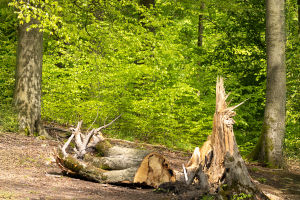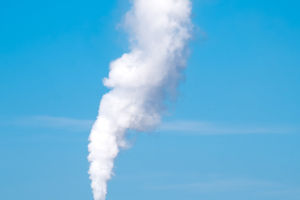Have you noticed how some regions are getting hotter while others seem to be facing more unpredictable weather?
These shifts aren't just coincidences—they're happening because of global climate change. Our planet's climate zones, which dictate everything from tropical warmth to polar cold, are being dramatically altered.
The relationship between climate zones and the global climate crisis is complex, but understanding it can help us see why the world is changing in ways we've never experienced before.
Understanding Climate Zones
Climate zones are essentially large areas on Earth that share similar weather patterns over a long period. These zones are determined by factors like temperature, precipitation, and seasonal variations. The main climate zones are categorized as tropical, arid, temperate, cold, and polar, and each zone has a unique ecosystem and weather system.
1. Tropical Climate: Found near the equator, this zone is characterized by warm temperatures year-round, with a lot of rainfall. Think rainforests and lush vegetation.
Example: The Amazon rainforest, where high humidity and frequent rain create one of the most biodiverse ecosystems on Earth.
2. Arid Climate: This zone is characterized by dry conditions, with little rainfall. Deserts fall under this category.
Example: The Sahara Desert, where temperatures can reach scorching highs and rain is a rare event.
3. Temperate Climate: These zones have moderate temperatures with distinct seasons. The weather changes with the seasons, offering a mix of warm summers and cold winters.
Example: The Mediterranean region, with its mild, wet winters and hot, dry summers.
4. Cold Climate: Found in high-latitude regions, cold climates experience long, harsh winters and short, cool summers.
Example: Siberia, where winter temperatures can drop to extremes, making it one of the coldest places on Earth.
5. Polar Climate: These areas are cold year-round, with temperatures often below freezing. The polar regions see very little sunlight in the winter and almost continuous daylight in the summer.
Example: Antarctica, which is the coldest place on Earth, where ice sheets cover the land.
Global Warming and Changing Climate Zones
Climate change is causing global temperatures to rise, and this is having a direct effect on climate zones. Warmer temperatures are shifting the boundaries of these zones, pushing tropical climates into areas that were once temperate and transforming arid regions into more humid ones.
For example, many places that were once considered temperate are now experiencing more extreme weather patterns. Winters are shorter, and summers are hotter, which is disrupting the natural rhythms of ecosystems and agriculture.
Example: In the Arctic, temperatures are rising at twice the global average. This warming is causing polar ice to melt, which is not only affecting wildlife but also changing ocean currents and weather patterns in regions far beyond the poles.
These shifts can also lead to more frequent and intense weather events like heatwaves, floods, and storms, which are disrupting the delicate balance of ecosystems and causing widespread damage.
How Climate Change Affects Agriculture and Resources
One of the most direct impacts of shifting climate zones is on agriculture and water resources. Different plants and crops thrive in specific climates. As the climate warms and changes, regions that once had ideal conditions for farming may no longer be able to support those crops.
For instance, many staple crops like wheat, rice, and corn are highly sensitive to temperature and water availability. In regions where temperatures are rising too fast, crop yields can decline, leading to food shortages.
Example: In parts of Sub-Saharan Africa, prolonged droughts are making it harder to grow crops like maize and beans. These crops are vital for local food security, and their decline is leading to higher prices and even famine in some areas.
Water resources are also at risk. As climate zones shift, areas that once had stable water supplies may start experiencing droughts. Conversely, other areas may face the opposite problem: more rainfall than they can handle, leading to floods.
Example: The Mediterranean region, once known for its dry summers, is now facing increased rainfall in the winter. This has led to flooding, which damages infrastructure and disrupts agriculture.
The Future of Our Climate Zones
If current trends continue, the shifting of climate zones will lead to some major changes in the way we live. It's important to note that while global warming is a major factor, natural variability and human activities also play a role in the changes we're seeing.
It's not all bad news, though. Many scientists are working on solutions to help mitigate the effects of climate change. From renewable energy to carbon capture technologies, there are innovative ways to slow down the rate of warming and adapt to new climate conditions.
Example: Countries around the world are transitioning to solar and wind energy, reducing their reliance on fossil fuels and helping to decrease greenhouse gas emissions. By investing in green technologies, we can help reduce the impact of climate change on our planet's ecosystems.
Adapting to a Changing Climate
The good news is that humans are resourceful, and we have the ability to adapt to the changing world around us. By shifting to sustainable practices, both in agriculture and in daily life, we can mitigate some of the negative effects of shifting climate zones. This means using water more efficiently, planting crops that are better suited for new conditions, and building more resilient infrastructure that can handle extreme weather events.
Adapting to these changes also involves understanding how our actions today will shape the world of tomorrow. As individuals, we can reduce our carbon footprint by using less energy, supporting eco-friendly products, and encouraging policies that prioritize environmental sustainability.
The climate zones are changing—and so must we. But with the right efforts, we can help the planet adapt and thrive in the face of these challenges.


